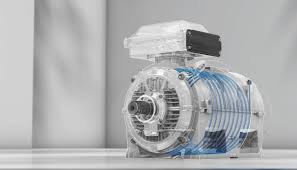Introduction
Energy-Efficient Cooling Technologies are revolutionizing the way industries, buildings, and homes manage temperature regulation. As global energy consumption continues to rise, the demand for innovative solutions that reduce energy use while maintaining optimal cooling performance has never been higher. These technologies integrate advanced materials, smart systems, and renewable energy sources to provide sustainable cooling solutions. By reducing environmental impact, lowering operational costs, and improving system performance, energy-efficient cooling technologies are paving the way for a greener future, where cooling processes are more sustainable and less reliant on conventional energy sources.
Advanced Refrigerants
- Low-GWP Refrigerants: Hydrofluoroolefins (HFOs) are designed to have minimal environmental impact compared to traditional hydrofluorocarbons (HFCs), which contribute significantly to global warming.
- Natural Refrigerants: Ammonia, CO₂, and hydrocarbons like propane are gaining popularity due to their excellent thermodynamic properties, energy efficiency, and low environmental impact. These refrigerants comply with global regulations like the Kigali Amendment.
Variable Speed Drives (VSDs)
- VSDs allow components such as compressors, pumps, and fans to run at variable speeds based on the system’s cooling demand.
- For example, in low-demand situations, a compressor with a VSD consumes significantly less energy compared to one running at a fixed speed. This ensures efficient energy usage and extends the equipment’s lifespan.
Magnetic Refrigeration
- Instead of traditional vapor-compression systems, magnetic refrigeration uses magnetocaloric materials that heat up when exposed to a magnetic field and cool down when removed.
- This technology is highly energy-efficient, operates quietly, and eliminates the need for chemical refrigerants, making it eco-friendly and safer.
IoT and Smart Cooling Systems
- IoT sensors monitor key parameters like temperature, pressure, and airflow in real time.
- AI-driven analytics process this data to detect anomalies, predict maintenance needs, and dynamically adjust system operations, ensuring peak energy efficiency and reducing downtime.
Phase Change Materials (PCMs)
- PCMs absorb or release large amounts of thermal energy during phase changes, such as melting or solidifying.
- They stabilize temperatures within buildings or cooling systems by reducing the load on active cooling equipment, significantly lowering energy consumption.
Evaporative Cooling
- This method cools air by evaporating water, requiring much less energy than refrigeration-based air conditioners.
- Modern evaporative coolers incorporate advanced filters and pumps, making them suitable for industrial processes, data centers, and large warehouses.
Solar-powered Cooling Systems
- Solar-powered systems use thermal energy to operate absorption chillers, which are particularly effective in sunny regions.
- Hybrid systems combine solar power with conventional cooling, ensuring reliability during cloudy periods while reducing reliance on non-renewable energy sources.
Radiative Cooling
- Innovative materials are used to reflect sunlight and emit heat as infrared radiation.
- This passive technology is ideal for cooling rooftops, buildings, and even industrial systems without requiring additional energy inputs, offering cost savings and sustainability.
District Cooling Systems
- Centralized cooling plants generate chilled water, which is then distributed to multiple buildings through insulated pipelines.
- These systems reduce energy consumption by eliminating the need for individual cooling units, achieving economies of scale and better efficiency.
Energy Recovery Technologies
- Heat recovery chillers capture and repurpose waste heat from cooling processes.
- For example, the heat extracted from a building’s cooling system can be used for water heating, improving overall energy utilization and reducing costs.
Thermoelectric Cooling
- Based on the Peltier effect, thermoelectric modules create a temperature difference when an electric current flows through them.
- These compact and silent systems are perfect for niche applications such as electronics, medical devices, and small-scale cooling solutions.
Conclusion
Energy-Efficient Cooling Technologies are driving significant advancements in sustainability and cost-effectiveness across various sectors. With innovations such as smart systems, advanced refrigerants, and renewable-powered solutions, these technologies not only reduce energy consumption but also minimize environmental impact. As industries continue to adopt and refine these solutions, the future of cooling systems looks greener, more efficient, and more adaptable to the growing challenges of climate change and energy demand. Embracing these technologies is key to achieving long-term energy savings and contributing to a more sustainable, eco-friendly future.

